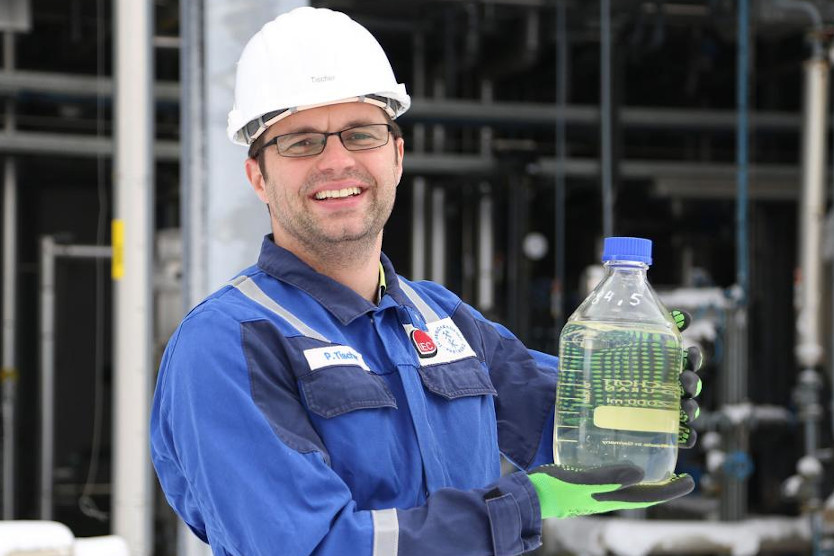
Paul Tischer, researcher at TU Bergakademie Freiberg , with a container of the CO2 neutral gasoline
© TU Bergakademie Freiberg
The dream of an environmentally friendly alternative to petrol is closer than ever thanks to scientists at the Technical University (TU) of Mining in Freiberg, eastern Germany. Their ground-breaking synthesis technology uses carbon dioxide (CO2), water and electricity in a series of chemical reactions to produce a high-octane gasoline. Twelve tons of the synthetic “green gasoline” have been produced and are being tested by leading German automobile manufacturers.
While the chemistry behind this breakthrough is relatively simple – first the water is split into hydrogen and oxygen by electrolysis, then the CO2 is enriched with hydrogen to produce methanol, which is then turned into gasoline – the team at the TU in Freiberg, Saxony, were the first to develop a technique to produce at quantity. “For this special gasoline synthesis technology, we are so far unique. And especially for applications from biomethanol, we are currently really the only ones producing it,” says Peter Seifert, chair of Energy Process Engineering at the TU to MDR.
One of the key development partners in the project, the chemical engineering plant Chemnitz Chemieanlagenbau (CAC), has high hopes for the synthetic fuel, which already meets the auto industry’s specifications and could one day be used to power aircraft in the form of green kerosene. "Synthetic fuels are the future of mobility," says CAC’s MD Joachim Engelmann to MDR. "Many are interested in our process, but so far no industrial-scale plant has been built. Our most important goal is to build such a plant, because the technology is market-ready.”
Furthermore, one of the main ingredients – CO2 – is an industrial waste gas. An unwanted by-product is turned into valuable commodity. Industrial production of green gasoline could therefore contribute to reducing the amount of the greenhouse gas released into the atmosphere. In addition, the chemical waste produced in the process can be reused – i.e. turned back into carbon and hydrogen. This circular, collaborative approach to chemical engineering serves as a model for manufacturing in the 21st century. The Federal Ministry of Economics and Energy is funding the research and development work within the "C3 Mobility" research project.


